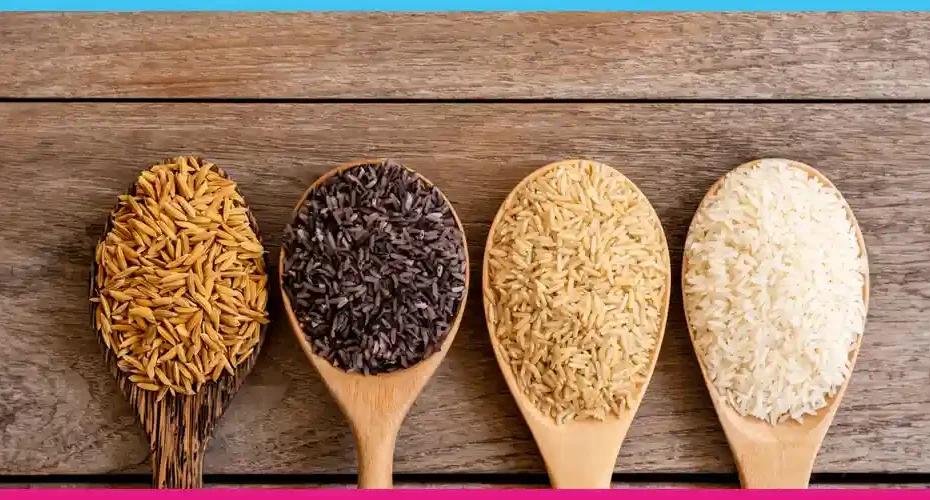Introduction:
Living with diabetes requires a thoughtful approach to dietary choices and rice-one of the staple foods in many cultures-demands careful consideration. With its impact on blood sugar levels, selecting the right method to consume rice is crucial for individuals managing Diabetes-friendly rice consumption.In this blog post, we’ll explore useful tips to help make informed choices that align with your health goals with Thamara 20.
Which rice should i eat:
choosing whole grain rice varieties such as
-
- Brown rice
-
- Quinoa
-
- Basmati rice or parboiled rice can be beneficial. These options generally have a lower glycemic index and higher fiber content, which helps regulate blood sugar levels. Brown rice, in particular, retains the bran and germ layers, providing additional nutrients and fiber compared to white rice. Basmati and parboiled rice are also considered good choices due to their lower glycemic index. Portion control is crucial, and it’s advisable to pair rice with lean proteins and healthy fats to further support stable blood sugar levels.
-
- However, individual responses can vary, so monitoring blood sugar levels regularly and consulting with healthcare professionals, including a registered dietitian, can help tailor rice choices to individual needs for effective diabetes management.
Choose Whole Grains:
Individuals with diabetes can benefit from choosing whole grain rice varieties like brown rice or quinoa. These options have a lower glycemic index and offer more fiber, promoting better blood sugar control.
Can i eat black rice:
Black rice can be a suitable option for individuals with diabetes. Black rice is a whole grain that contains more fiber, antioxidants, and nutrients compared to refined white rice. The fiber content in black rice can contribute to better blood sugar control by slowing down the absorption of carbohydrates.
Ayurvedic food control:
Ayurvedic dietary guidelines also stress the importance of mindful eating, regular meal times, and avoiding excessive consumption of sweet, salty, and oily foods.If you want to read more details about ayurvedic treatment click this link: https://www.thamara20.com/categorized/ayurvedic-treatment-for-diabetes/
Balance with Protein and Healthy Fats:
Pairing rice with lean proteins and healthy fats helps slow down the absorption of carbohydrates, preventing rapid spikes in blood sugar. Consider incorporating sources like grilled chicken, fish, or avocado into your meals.
Consider Basmati or Parboiled Rice:
Basmati and parboiled rice have a lower glycemic index compared to some other varieties. Including these options in your diet can be a smart choice for better blood sugar management.
When should i eat food:
Aim for consistent meal times each day, incorporating a balanced mix of carbohydrates, proteins, and healthy fats. Consider distributing your carbohydrate intake evenly throughout the day, with some individuals finding it beneficial to consume a slightly higher proportion earlier in the day with Diabetes-friendly rice consumption.
when the body may process them more efficiently. Check your blood sugar levels before meals to guide food choices and portion sizes. If there are long gaps between meals, include healthy snacks to prevent extreme blood sugar fluctuations. After taking food try thamara 20 to balance you sugar level and Avoid large meals right before bedtime to mitigate elevated blood sugar levels during the night.
Choose Low-Glycemic Cooking Methods:
Opt for cooking methods that have a minimal impact on blood sugar, such as steaming, boiling, or using a rice cooker. Avoid frying, as it can increase the glycemic index of rice.
Be Cautious with Sauces and Condiments:
Many sauces and condiments may contain added sugars. Choose sugar-free or low-sugar alternatives, and explore the use of herbs and spices to add flavor to your rice dishes.
Monitor Blood Sugar Levels:
Regular monitoring of blood sugar levels allows you to understand how different rice types and cooking methods affect your body. This knowledge empowers you to make informed decisions about your diet.
Diversify with Alternative Grains:
Experiment with alternative grains like cauliflower rice, quinoa, or barley. These grains offer variety in texture and flavor while providing different nutritional benefits.
Stay Hydrated:
Drinking water before and during meals can help control appetite and contribute to better blood sugar management.
Timing Matters:
Consider having rice earlier in the day when your body may be more efficient at handling carbohydrates. Avoid large rice portions close to bedtime.
Conclusion:
Choosing the right method to consume rice for individuals with diabetes involves a combination of thoughtful choices, portion control, and regular monitoring. By incorporating these tips into your dietary routine, you can Diabetes-friendly rice consumption with confidence, making choices that support your overall health and well-being. Additional health tip to add thamara 20 sachets daily you can feel the sugar control in your body As always, consult with healthcare professionals for personalized advice tailored to your specific needs.
